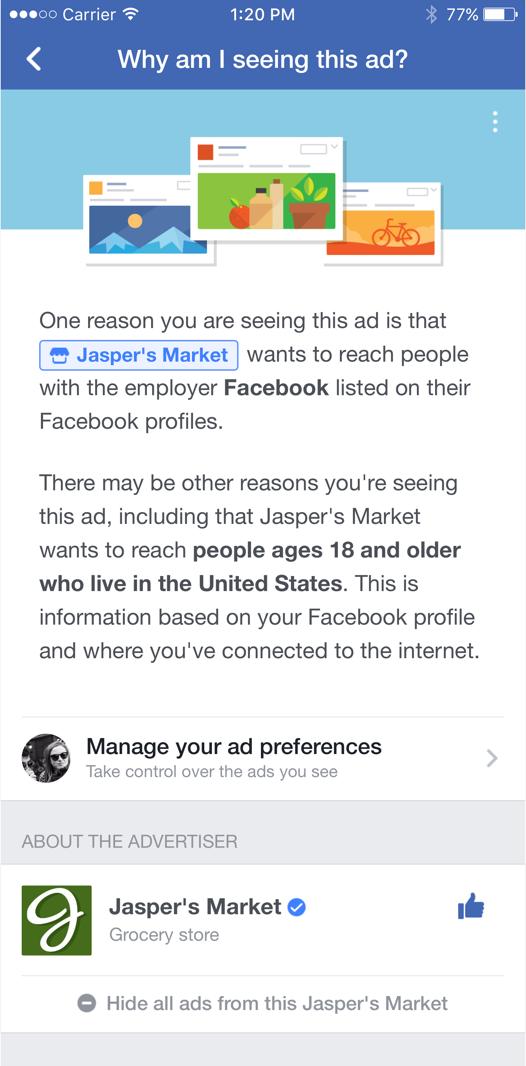SAN FRANCISCO — Digital ads pop up online so frequently and ubiquitously that many people are using software to block them.
But if you try to stop ads from showing up on Facebook’s desktop website, you will now be out of luck: The social network has found a way to block the ad blockers.
On Tuesday, Facebook will flip a switch across its desktop website that essentially renders all ad blockers — the programs that prevent websites from displaying ads on the page when a user visits the site — useless. The change allows the Silicon Valley company to serve ads on its desktop site even to people who have ad-blocking software installed and running.
“Disruptive ads are an industry problem, and the rise of ad blockers is a strong signal that people just don’t want to see them,’’ Andrew Bosworth, vice president of Facebook’s ads and business platform, said in an interview. “But ad blockers are a really bad solution to that.’’
Facebook’s move is set to add to a furious debate about the ethics of ad blocking. On one hand, many digital ads are a nuisance — they slow loading times of Web pages and detract from the online experience. Yet the ads also serve as the business foundation for many digital publishers to provide content to readers.
Ad blockers have become a threat to publishers including The New York Times and The Wall Street Journal, which are facing declining advertising revenue. About 200 million people worldwide use ad-blocking software on their desktop computers, according to estimates from PageFair, an anti-ad-blocking startup. An additional 420 million use ad blockers on their smartphones, the company said.
A number of digital publishers, including Wired, Forbes, and The New York Times, have begun experimenting with anti-ad-blocking techniques, including asking visitors who use ad blockers to “whitelist’’ their sites so that ads may still appear.
“Trying to use and get the benefit of The Times’s journalism without making any contribution to how it’s paid is not good,’’ Mark Thompson, chief executive of the New York Times Co., said at an ad industry conference in February where he addressed ad blocking. “Everything we do should be worth paying for.’’
Bosworth of Facebook said that ad blockers were “certainly bad for the publications who are robbed of half of the value exchange between users and publishers.’’ But rather than blocking all ads, he said, Facebook needed to find a way to serve better ads.
Facebook’s move is perhaps the strongest anti-ad-blocking measure taken by a major technology company, especially one that serves advertising to more than 1.7 billion monthly users globally. The effort is risky for the company, which prides itself on delivering the best user experience, because it could alienate some people for whom ad blocking is an ideological stance on how they wish to access the Internet.
To shut down the blockers, Facebook is taking aim at the signifiers in digital ads that blockers use to detect whether something is an ad. Facebook’s desktop sitewide changes will then make ad content indistinguishable from nonadvertising content. For blockers to get around these changes, Facebook said they would have to begin analyzing the content of the ads themselves, a costly and laborious process.
But Facebook will continue to let people have some control over the ads they do and do not see. On Tuesday, the company is also rolling out an overhauled version of its ad preferences tool, which allows people to opt out of seeing certain types of ads on the site. That will help Facebook serve more relevant ads, rather than bombard people with ads they do not want.
“We want people to help us do a better job with ads, rather than to fundamentally alter the way the service is rendered,’’ Bosworth said.




